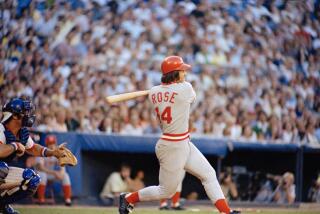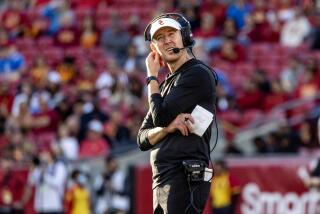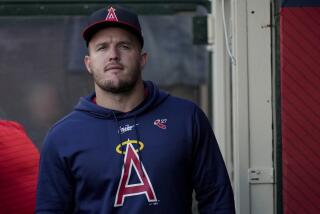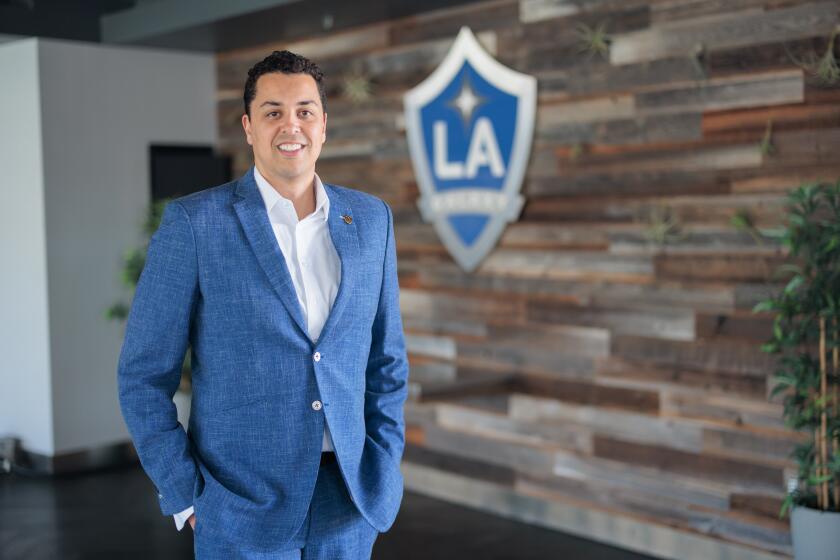History May Deem His Arm a Work of Art
The first thing to be established some day wherever baseball fans gather to talk over the good old days is that there really was a Nolan Ryan.
That he wasnât a character in a Robert Redford movie, he wasnât a guy who sold his soul to the devil in a Broadway play, or something out of the pages of a Burt L. Standish book, even though he was as improbable as any of them. âSometimes,â an ex-manager, Bill Rigney, once said, âI think Nolan Ryan is a figment of his own imagination.â
First of all, there was The Arm. Itâs a baseball legend. Baseball had never seen anything like it before, at least since Walter Johnson.
It delivered a fastball to a catcher so fast on some nights that it wasnât even audible, never mind visible. âHitting Nolan Ryanâs fastball is like eating coffee with a fork,â Reggie Jackson once observed.
No one taught him how to throw it. He showed up at a ballpark with it one day and struck out the side.
You couldnât hit Nolan Ryanâs fastball. The nice thing about it was, you didnât have to. Nolan would walk the side, too.
âNolan could throw the ball through a brick wall,â the late Gil Hodges once opined. âProvided he could hit the wall.â
Almost the first game in which he ever pitched, in the Carolina League, he struck out 21. And lost the game. âWhen Nolan lets go of a ball, itâs like dropping a note in a bottle overboard. No telling where it will end up,â his pitching coach once said.
Baseball has never known what to do with a work of art. Baseball would paint glasses on the Mona Lisa, wallpaper the Sistine Chapel.
When Nolan Ryan first showed up in the big leagues with one of the most devastating pitches the game had ever seen, the coaches gathered in grave conclave.
âHis mechanics are all wrong,â they assured themselves. âHow about if we drop his arm down more?â
âMaybe if we get him to pitch off his front foot more.â It was like six clerks rewriting Hemingway.
Ryan himself almost bought the poor self-image that was thrust on him. Twice, he almost quit the grand old game--once when he was in New York used mainly in relief and once when he reported to the Angels and the game went on strike.
He was the only guy in the history of the game where they were still talking about his âpotentialâ after he had thrown several no-hit games, won a couple of hundred others and was breaking all-time strikeout records, to say nothing of hittersâ bats.
His composite stats read as if itâs two guys. Jekyll Ryan won 239 games. Hyde Ryan lost 211. He struck out more than anyone who ever lived, 3,981. But he walked more than anyone who ever lived, 2,128.
He struck out more men in a season (383 in 1973) than any pitcher in the game. But only Bob Feller (208) ever walked more men than Ryan did in a season (204).
Heâs the best pitcher whoâs never won the Cy Young Award, which he didnât even win the year he pitched two no-hitters, won 21 games and broke the all-time single-season record for strikeouts.
He got in only 2 innings of a World Series because the New York Mets thought he was a relief pitcher in those days.
They later concluded he wasnât even that, because when they traded him for infielder Jim Fregosi, they threw a minor league pitcher (Don Rose), an outfielder (Lee Stanton) and a catcher named Francisco Estrada in the deal.
Itâs the only recorded instance of a franchise sweetening the pot for a team to take a sure Hall of Famer off its hands.
When the Angels let Ryan go uncontested in the free-agent draft in 1979, the general manager sniffed, âAll we have to do is sign up two eight-game .500 pitchers.â (Ryan was 16-14 that season.)
Recording these quasi-insults, baffled historians may some day be moved to ask, âDid you play in a mask or under an assumed name?â
I mean, how else could a Nolan Ryan be a throw-in on a Francisco Estrada and Don Rose deal or how else could a front office watch a four-no-hit pitcher walk off with a shrug?
Part of the problem was Nolan Ryan. He didnât play the part. Ryan was the least superstar-acting of any superstar you ever met.
When other hotshots bought Mercedes or gold chains, Ryan bought cows. When they went to discos, he married his childhood sweetheart. When they went on talk shows, he went home on the range.
Ryan didnât swagger, tease, form cliques, second-guess or refuse to sign autographs. He showed up in a locker room like a guy who had come to fix the plumbing. No one sent limos. Nolie made the team bus.
When winter came, Ryan was not on a dais, he was on a horse. His idea of an audience was a herd of cattle.
His feats will grow in legend when he leaves. Not that 5 no-hitters, 9 one-hitters, 18 two-hitters and 26 three-hitters need much embellishment. Neither do 54 shutouts. Ryan makes Lardnerâs âElmer the Greatâ look like a documentary.
Nolan the Great sat in a dugout the other day and reflected on a career that has gone on not only longer than the Metsâ coaches had thought possible but also longer than he had dreamed possible.
Why, he was asked, had it gone on so long? Was winter on a ranch in Texas instead of a golf course in Florida the answer? Was it better to be mending a fence than returning a serve?
Ryan was not sure. âAll my life, I had this talent,â he said. âI could throw a baseball hard. But people made me think something was missing--that I should have come up in some organization that would have channeled it. Now, Iâm not so sure. Iâve lasted. Iâm not a numbers man, so wins, strikeouts, shutouts donât mean that much to me.
âBut Iâd like to make 20 years. Thatâs 1987. My contract runs out then. I must have done something right. How many power pitchers do you know that last 20 years? How many guys you know have had the career Iâve had?â
The answer, of course, is hardly any. Come to think of it, itâd make a great movie for somebody. They could call it, âThe Natural.â
More to Read
Go beyond the scoreboard
Get the latest on L.A.'s teams in the daily Sports Report newsletter.
You may occasionally receive promotional content from the Los Angeles Times.










